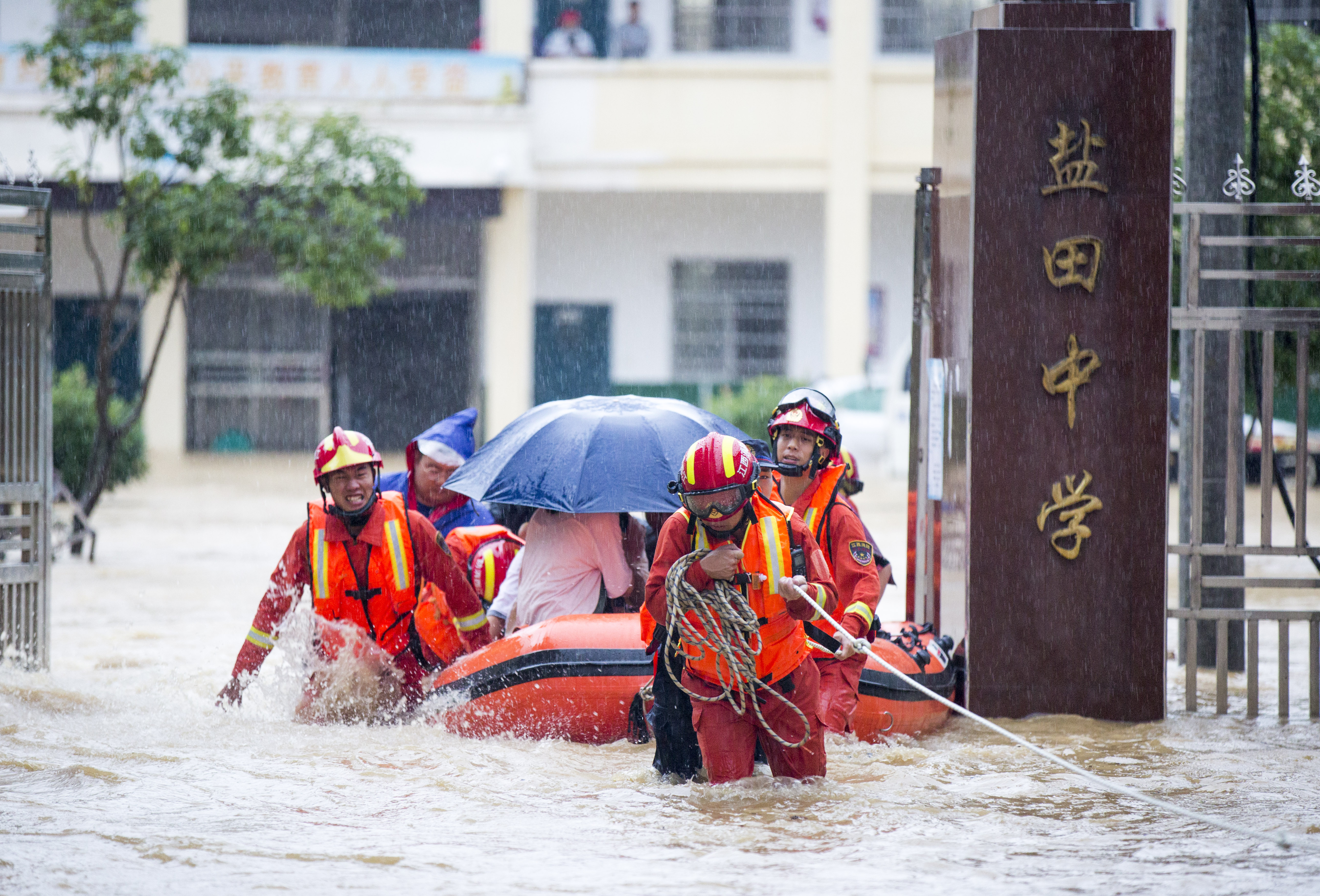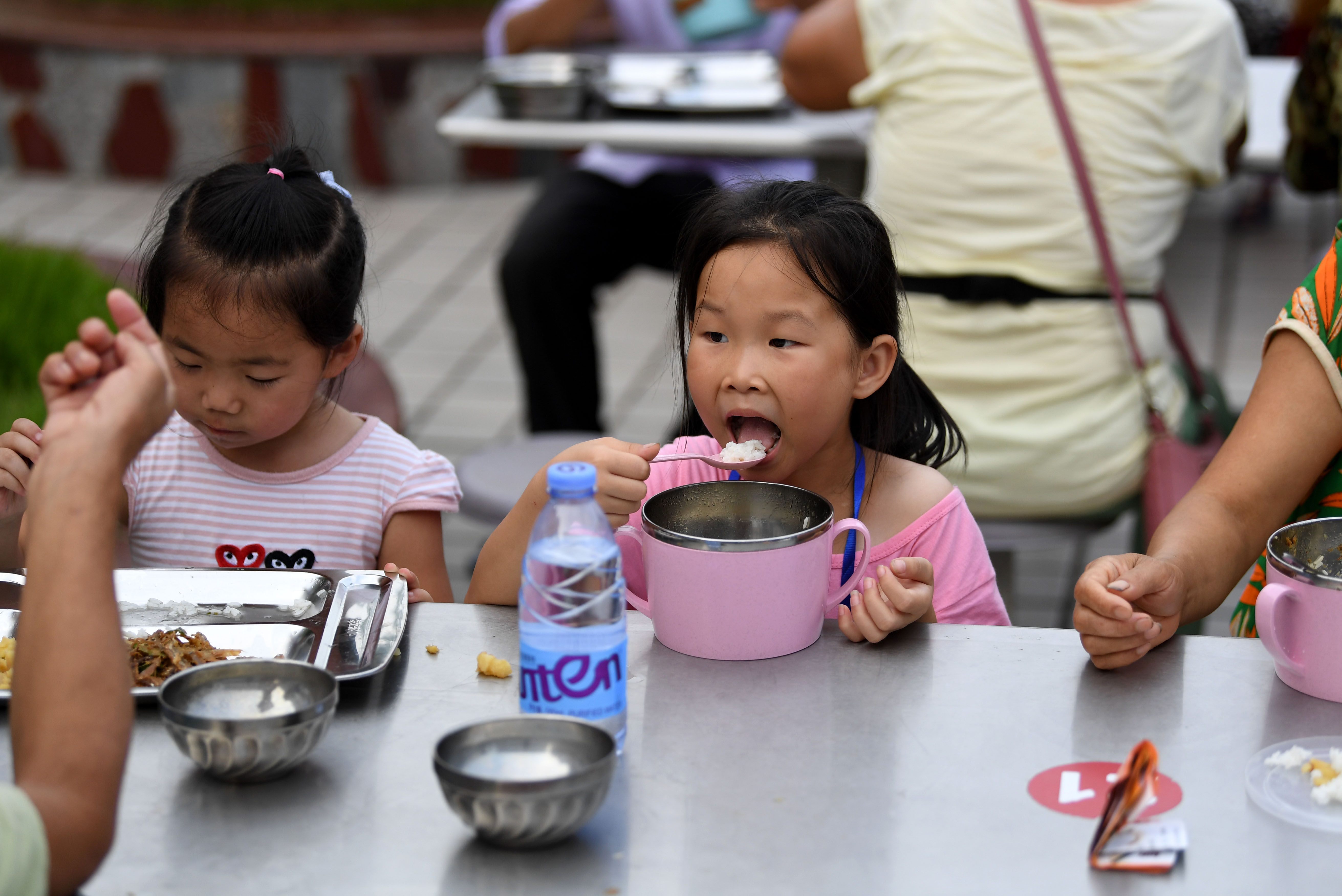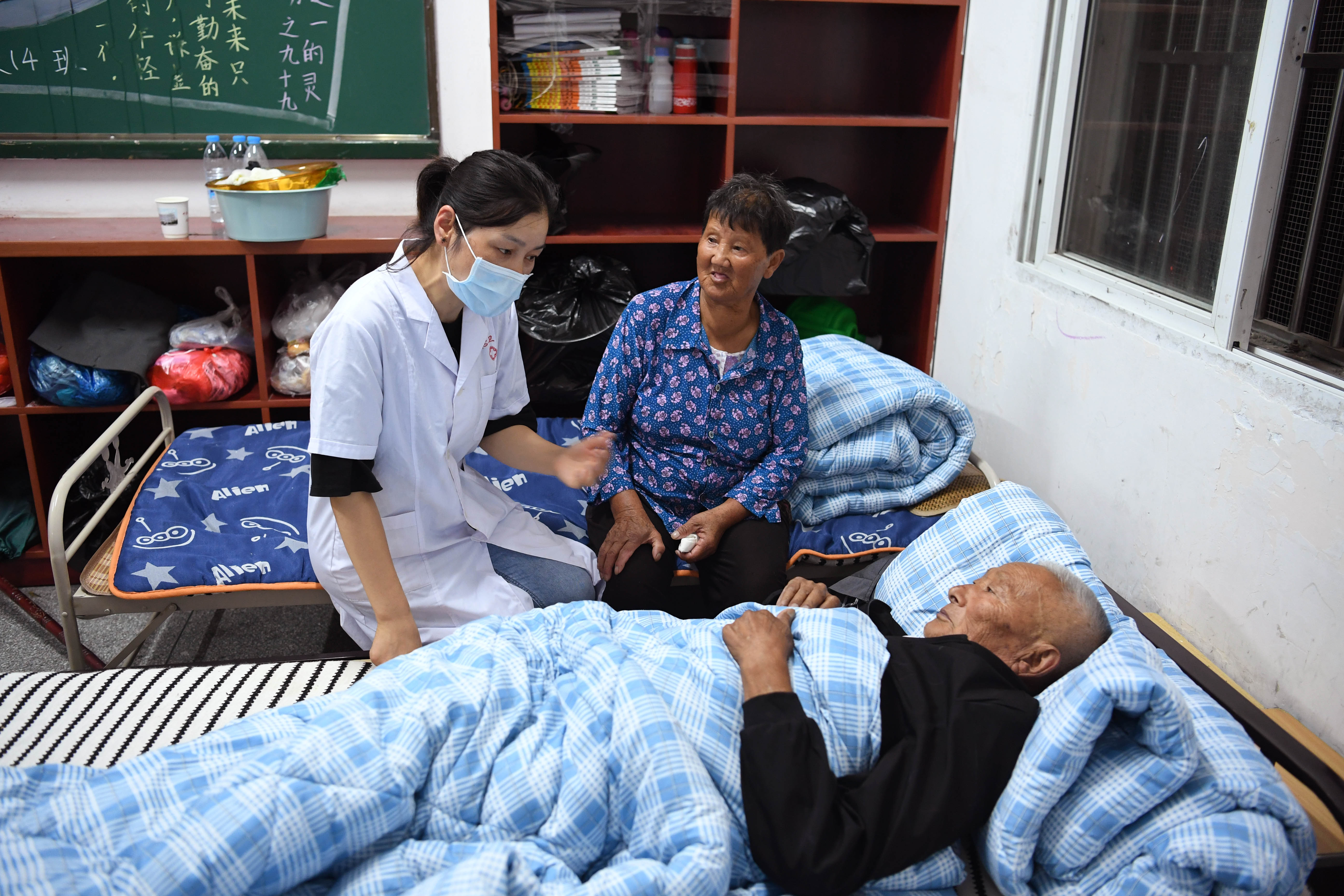-- Countless members of the Communist Party of China (CPC) are fighting on the frontline against devastating summer floods in China.
-- As the floods swallowed people's homes, local officials worked to evacuate residents, while taking measures to keep the COVID-19 epidemic in check.
-- In places where the floods are still roaring, officials have already organized locals to restart production.
-- Officials and the public are helping fight floods with joint efforts.
by Xinhua writers Zhong Qun, Wu Zhonghao and Liu Fangqiang
NANCHANG/HEFEI, July 31 (Xinhua) -- Fang Aihong sat in a swaying boat in floodwater, as she delivered instant noodles and bottled water to flood-hit residents. All of a sudden, a strong wave capsized the boat, and she fell into the water.
"I choked in the water and could barely breathe," she recalled.
Desperate, she grabbed a log and held onto it as she was swept downstream for nearly two kilometers, until villagers in the vicinity raced to rescue her.
"I thought I might not make it," she said.
Fang, 45, is Party chief of Qianyang Village in the county of Poyang, east China's Jiangxi Province. She is among countless members of the Communist Party of China (CPC) fighting on the frontline against devastating summer floods in China.

Flood-control workers patrol the levee along Qingyi River at Yijiang District in Wuhu City, east China's Anhui Province, July 15, 2020. (Xinhua/Zhang Duan)
As the rarely big floods inundated croplands and threatened the lives of people in vulnerable areas, China has been sparing no effort to win the fight against the disaster, with massive mobilization, evacuations and a top-level emergency response in several hard-hit provinces.
The rain-triggered floods had affected some 54.8 million people in 27 provincial-level regions as of Tuesday, according to the Ministry of Emergency Management (MEM).
Floods in these areas, including the provinces of Jiangxi, Anhui and Hubei, have left 158 people dead or missing, and forced the evacuation of around 3.76 million people since June 1.
More than 40,000 houses collapsed and another 368,000 houses were damaged due to the floods. The direct economic losses amounted to 144.43 billion yuan (about 20.6 billion U.S. dollars).
However, the number of the dead and missing due to floods fell by 53.9 percent compared with the average of the past five years while the number of evacuated people increased by 36.7 percent, according to the MEM.

Rescuers transfer students at Yantian Middle School in Jiujiang, east China's Jiangxi Province, July 8, 2020. (Photo by Fu Jianbin/Xinhua)
The Chinese leadership has called for unrelenting efforts to ensure the safety of people's lives and property.
On July 17, a CPC leadership meeting on the flood-control and relief work stressed putting people's lives and property first and taking more forceful measures to do a good job in flood-control and relief work.
BLOCKING EPIDEMIC SPREAD AMID FLOOD CONTROL
As the floods swallowed people's homes, local officials worked to evacuate residents, while taking measures to keep the COVID-19 epidemic in check.
In the county of Funan, Anhui Province, Wang Chuanshuang went to help evacuate local villagers in the village of Liudian.
"We arrived at around midnight, and started moving pesticide and handicrafts for the villagers," said Wang, an official with the county's bureau of transport. "We worked until 3 a.m."
In the county of Zongyang, Anhui Province, officials have been relocating villagers to temporary flood shelters.
Villager Wang Baitie has been staying in one such shelter, a repurposed local school, for five days.
"I heard that taking showers wasn't easy before I came, because there were many people," he said. "And I was also afraid that I might catch the coronavirus from the crowds."

Volunteers set a tent at a temporary settlement site in Hudong School in Yongxiu County, east China's Jiangxi Province, July 13, 2020. (Xinhua/Zhou Mi)
But the reality was completely different from what he expected.
"There are separate showers, and everyone gets a free mask every day," he said. "Sanitation workers come for disinfection three times a day."
Wang and other villagers live in the classrooms, with each housing 14 people.
To prevent any post-flood disease transmission, local authorities comprehensively cleaned flood-stricken areas and sent medical workers to help with disinfection.
As floods have battered many areas in Jiangxi's Shangrao City, disinfection work has been going on there for days.
In the township of Huanggang, in Jiangxi's Poyang County, more than 40,000 people in 27 villages were affected by floods. A number of medical teams were sent to sterilize the area and guarantee food safety.
RESTARTING WORK, PRODUCTION
A CPC Central Committee Political Bureau meeting on Thursday stressed safety should be ensured along rivers across the country and that the restoration and reconstruction after the floods should be carefully planned.
In Jiangxi Province, where the floods are still roaring, officials have already organized locals to restart production.

Children have a meal at a temporary settlement in Zhoutou Township, east China's Anhui Province, July 14, 2020. (Xinhua/Liu Junxi)
In the temporary resettlement in Hongmai School in the county of Poyang, a school canteen has been transformed into a workshop for manufacturing parts for circuit breakers.
"We persuaded a company to move its workshop to the canteen," said Cao Min, an official in charge of the resettlement. "We hope that the villagers can make some money even as they stay in the temporary shelters."
As the floods are yet to retreat from their home villages, the residents will have to spend some time in the shelter. The local officials came up with the idea of the "canteen workshop" to help villagers earn a few bucks during their stay there, Cao said.
By doing so, the local government hopes that those who have shaken off poverty will not fall back to poverty due to the floods, Cao said.

A medical worker checks the health condition of an elderly villager at a temporary settlement in Dangtu County, east China's Anhui Province, July 20, 2020. (Xinhua/Liu Junxi)
Yu Simei's house and farmland were inundated by floodwater. When she relocated to the school, she was concerned about how to make a living.
Since the "canteen workshop" was launched, she has been able to earn up to 80 yuan a day.
The local government also launched a recruitment campaign in the school, with local official Gao Jian taking recruitment ads to different classrooms and introducing recruitment policies and the benefits of different companies to the villagers.
"They are eager to get jobs," Gao said. "They filled out the registration forms very quickly."
Gao said some villagers can start working "very soon."
FIGHTING FLOODS WITH JOINT EFFORTS
In the central China province of Hunan, about 200,000 officials and locals are fighting the floods day and night, while in the eastern province of Jiangsu, the government has mobilized tens of thousands of people to patrol embankments where the floodwater has exceeded marks that were considered safe.
In Jiangxinzhou, a township-level settlement in the city of Jiujiang, Jiangxi, local authorities issued a letter to villagers working as migrant workers in cities, asking them to return home and help contain the floods.

A staff member straightens the national flag in front of a flood control post in Jiujiang, east China's Jiangxi Province, July 16, 2020. (Xinhua/Zhou Mi)
According to official data, since the letter was issued, more than 4,000 migrant workers have come back to join in the fight. Together they are tasked with patrolling embankments and filling and carrying sandbags.
Migrant worker Li Yajie is one of them.
"I usually work from 8 a.m. to 8 p.m.," Li said. "We take turns to patrol."
Li looks forward to containing the floods as soon as possible and believes all the hard work will be worth it.
As of July 28, the Chinese People's Liberation Army and the People's Armed Police Force had dispatched troops to 3,749 operations of flood relief, according to the Ministry of National Defense. The troops helped evacuate 137,000 residents affected by the floods.
"United we stand," said Yu Zhongdai, a CPC member and deputy head of Jiujiang's Xingang Township government. "I believe through the joint efforts, we will win the battle against the floods." (Video reporters: Liu Bin, Wang Qiwen, Jiang Hanzhang, Yu Gang, Peng Jing; Video editor: Zhang Yichi)■



